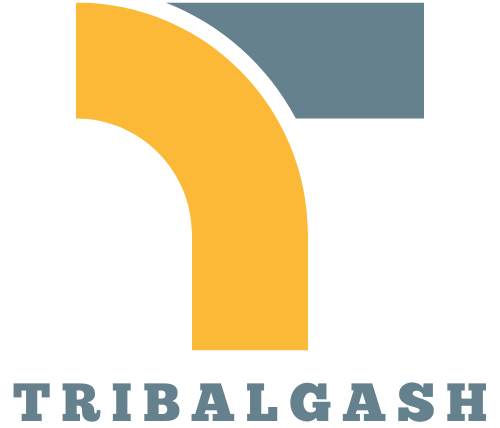In today’s fast-paced job market, navigating career paths can feel like trying to find your way out of a corn maze, except the walls keep changing. Enter the superhero of career navigation: the career development plan. This essential tool not only helps individuals chart their professional course but also ensures they avoid potential pitfalls along the way. Whether someone is just starting out, looking to climb the corporate ladder, or considering a career shift, a well-crafted plan can make all the difference. So buckle up as we jump into the world of career development plans with clear examples that can help anyone seize their professional destiny.
Table of Contents
ToggleUnderstanding Career Development Plans

Career development plans are like a GPS for one’s professional journey. They outline the steps needed to achieve career goals while keeping in mind personal aspirations and market demands. Typically, these plans include short-term and long-term objectives, skill assessments, and strategies for achieving desirable roles or advancements. Essentially, it’s a thoughtful approach that can transform vague ambitions into actionable goals.
At its core, a career development plan provides clarity. It answers critical questions: What skills are necessary for advancement? What training or education is needed? By answering these questions, individuals can take ownership of their professional growth. It encourages self-reflection, allowing them to evaluate personal strengths and areas for improvement.
Importance of Career Development Plans
Creating a career development plan isn’t just a nice-to-have: it’s a necessity in today’s competitive job market. First and foremost, it promotes self-awareness. By examining their skills and interests, individuals can strategically position themselves for desired roles. Also, career development plans serve as a motivational tool. They transform aspirations into real timelines that can foster enthusiasm and commitment to professional goals.
Also, these plans can lead to better job satisfaction. When individuals engage in structured growth, they are more likely to feel fulfilled in their roles. It’s about aligning professional goals with personal interests, which leads to a happier workforce overall. Let’s not forget, investing in one’s skills often leads to higher earning potential, making these plans not just beneficial but essential for economic success.
Common Components of Effective Career Development Plans
A well-structured career development plan typically includes several key components:
- Objectives: Clearly defined short-term and long-term career goals help direct focus.
- Skills Assessment: Identifying existing skills and recognizing gaps for further development.
- Action Steps: Concrete behaviors or tasks needed to reach career objectives, such as enrolling in courses or seeking mentorship.
- Timeline: A realistic timeline for achieving set goals, ensuring accountability.
- Resources: Identifying available resources like workshops, seminars, or online courses that can help in skill acquisition.
By incorporating these elements, individuals can create a comprehensive roadmap that guides them towards their desired career destination.
Examples of Career Development Plans
Exploring concrete examples can provide valuable insights into how to tailor personal career development plans.
Sample Plan for Recent Graduates
For a recent graduate, the plan may start with immediate goals:
- Objective: Secure an entry-level job in marketing within six months.
- Skills Assessment: Strong communication and basic design skills, but limited experience in digital marketing tools.
- Action Steps: 1. Enroll in an online digital marketing course. 2. Attend networking events to connect with industry professionals.
- Timeline: Complete the course within three months and start job applications thereafter.
- Resources: LinkedIn Learning, local career fairs.
Sample Plan for Mid-Career Professionals
For a mid-career professional looking to advance:
- Objective: Move into a managerial position within two years.
- Skills Assessment: Strong technical skills but lacks leadership experience.
- Action Steps: 1. Seek leadership opportunities within current role. 2. Obtain certification in project management.
- Timeline: Initiate leadership roles within six months: pursue certification within one year.
- Resources: Corporate training programs, mentorship from current managers.
Sample Plan for Career Changers
A career changer requires a distinct approach:
- Objective: Transition to a healthcare analyst role within a year.
- Skills Assessment: Strong analytical skills, no direct healthcare experience.
- Action Steps: 1. Undertake online courses in healthcare informatics. 2. Volunteer in healthcare settings to gain experience.
- Timeline: Complete coursework in six months while volunteering simultaneously.
- Resources: Online course platforms like Coursera, and local hospitals for volunteer opportunities.
How to Create Your Own Career Development Plan
Creating a personalized career development plan involves a few straightforward steps:
- Assess Your Current Position: Reflect on your strengths, weaknesses, opportunities, and threats (SWOT analysis).
- Define Clear Goals: Outline specific, measurable, achievable, relevant, and time-bound (SMART) goals.
- Identify Needed Skills and Knowledge: Research what skills are essential for your desired career path.
- Create an Action Plan: Detail how you will attain these skills, including courses, certifications, or mentoring.
- Set Timelines: Establish a schedule for your goals and action steps, keeping it flexible to accommodate unforeseen circumstances.
- Review Regularly: Revisit your plan regularly to measure your progress and adapt as needed to stay agile in response to changing job market conditions.









